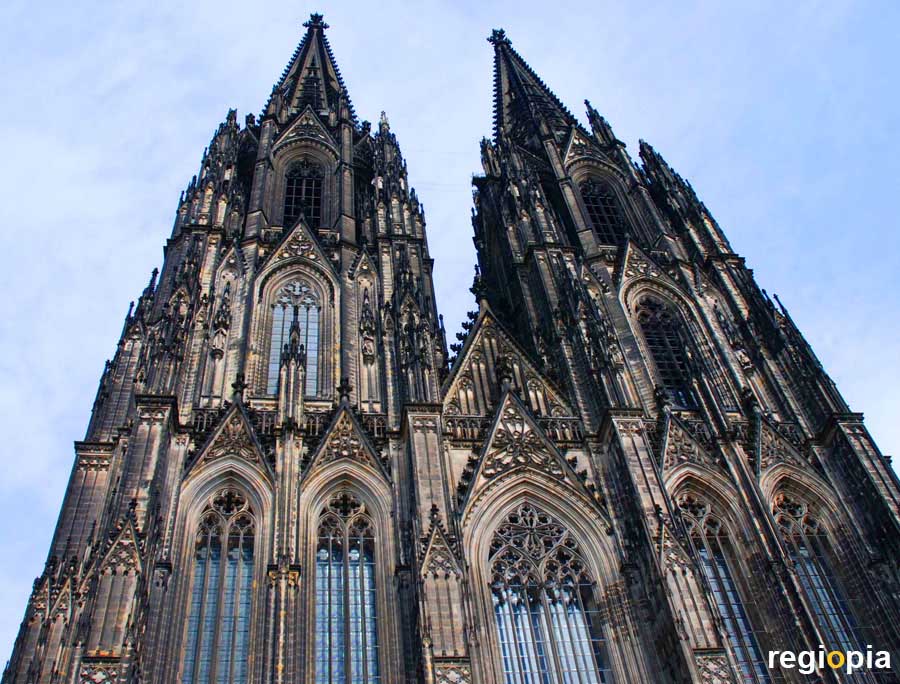
Cologne Cathedral
After the submission of Milan, the bones of the "Three Wise Men" were brought to Cologne in 1164. A large cathedral was planned for the important relics in 1225. The foundation stone for the Cologne Cathedral was laid in 1248, the cathedral was built according to the plans of Gerhard Rille. The choir was inaugurated in 1322. Around 1530, work on the cathedral was stopped. The cathedral was then around 60 m high and consisted essentially of the south tower and the choir. In between was an unfinished construction site. The flow of pilgrims dried up due to the Reformation and there was no money left to complete the Cathedral. When the old cathedral plans from the Middle Ages were found in Darmstadt in 1814, the desire to complete the building came up. Work resumed in 1823 and the Cologne Cathedral was finally completed in 1880. The two towers of the cathedral are each 157 m high. The Gothic cathedral was declared a UNESCO World Heritage Site in 1996. In 2007, "Gerhard Richter" windows were installed in the south transept. Cologne Cathedral is the third tallest church in the world after the Ulm Minster and Notre-Dame in Yamoussoukro (Ivory Coast).
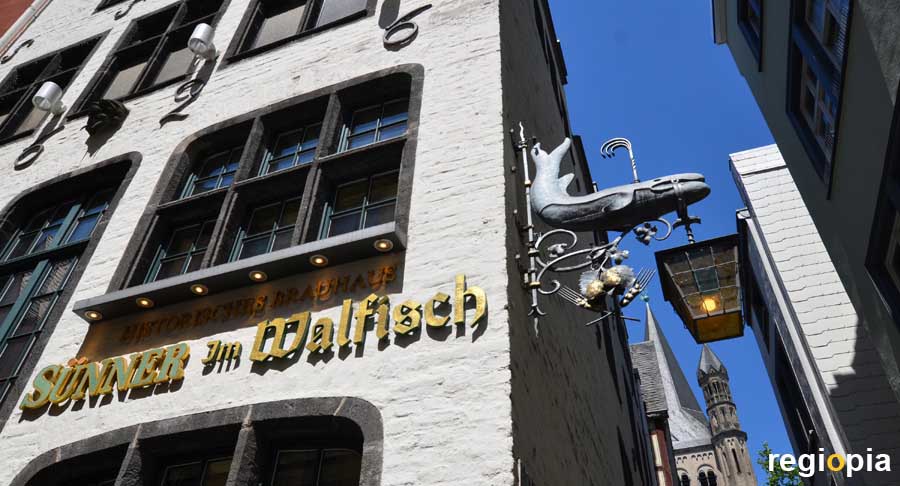
Cologne Old Town
Cologne was the largest city in Germany in the Middle Ages. Cologne's old town was huge and was located within the area that is now enclosed by the Kölner Ringroad. The medieval center is now divided into the areas old town north, inner city and old town south. Even though the war destroyed most of the buildings, the character of some neighborhoods was preserved. In the Martinsviertel you can still feel the atmosphere of old Cologne. The brewery "Sünner im Walfisch" in the Salzgasse and the "Delft House" on the Buttermarkt are particularly worth seeing. Even if the year 1626 can be read on the facade of the Sünner im Walfisch, the house was built on this spot in 1935. The gabled house previously stood in the neighboring Tipsgasse and was rebuilt here. The remarkable Salzgasse leads from the Heumarkt to the banks of the Rhine.
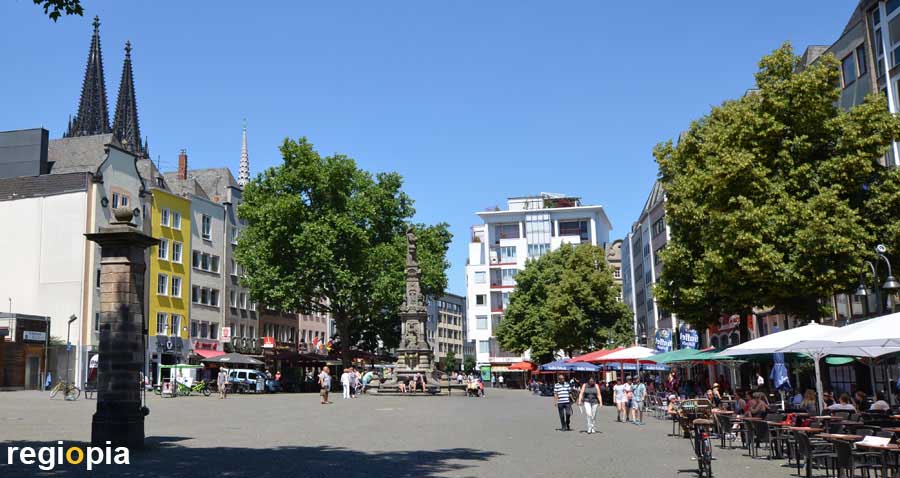
Old Market
When the Rhine port silted up, the old harbor basin was filled in and became the market square of Cologne. The marketplace was first mentioned in 922. Before the Second World War, the Old Market was one of the most beautiful squares in the Germany. The house "Zur Bretzel", which is now the Gaffel Brewery, has been preserved, most other buildings were destroyed.
The fountain by Johann von Werth, which stands in the middle of the square, is very important for Cologne. Jan von Werth was a servant who became general in the Thirty Years War and returned to Cologne with a triumphal procession. Before leaving, he had asked the maid Griet to marry him, but she refused. On his return he said to her: "Griet, if only you would have done it!" and she replied "Jan, if I had only known!". Then he gets back on his horse and rides away. Every child in Cologne knows the story of Jan and Griet because it is performed on this square every year during the carnival.
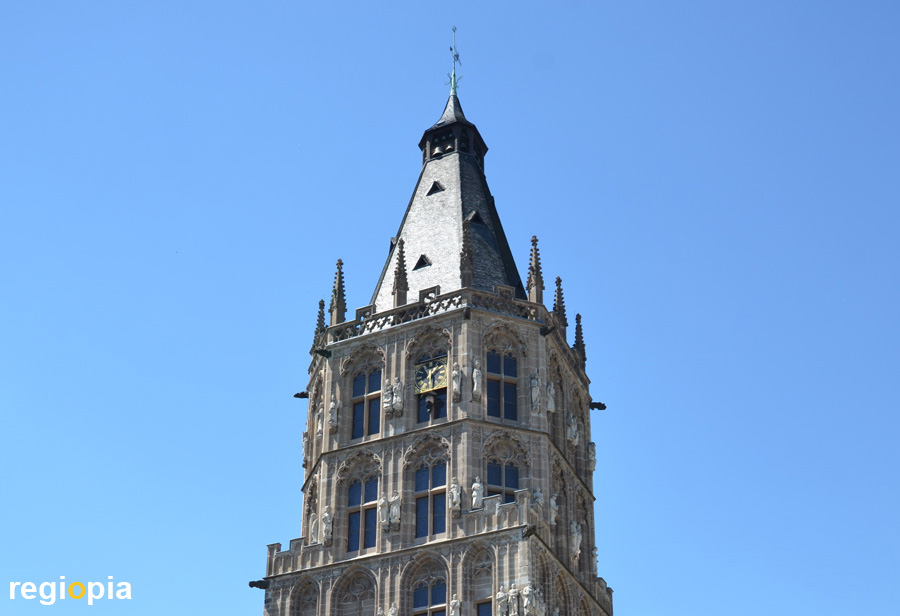
Cologne City Hall
The Cologne City Hall is considered the oldest city hall in Germany, it was mentioned in a document as early as 1152. The town hall consists of several parts that were built in different epochs. The oldest part is a long building on Rathausplatz, with battlements and a hipped roof. This Gothic building was constructed in 1330, the representative Hansa Hall is located in here. A Renaissance portal, which was completed in 1573, stands in front of the Gothic town hall.
The town hall tower was built in 1414 and towers over the town hall square and the Alter Markt square. The Gothic tower served as a warehouse for important documents of the city and as a lookout tower for the fire watch. The Cologne town hall tower is 61 m high and was the symbol of the city at that time. Its design is reminiscent of Flemish church towers.
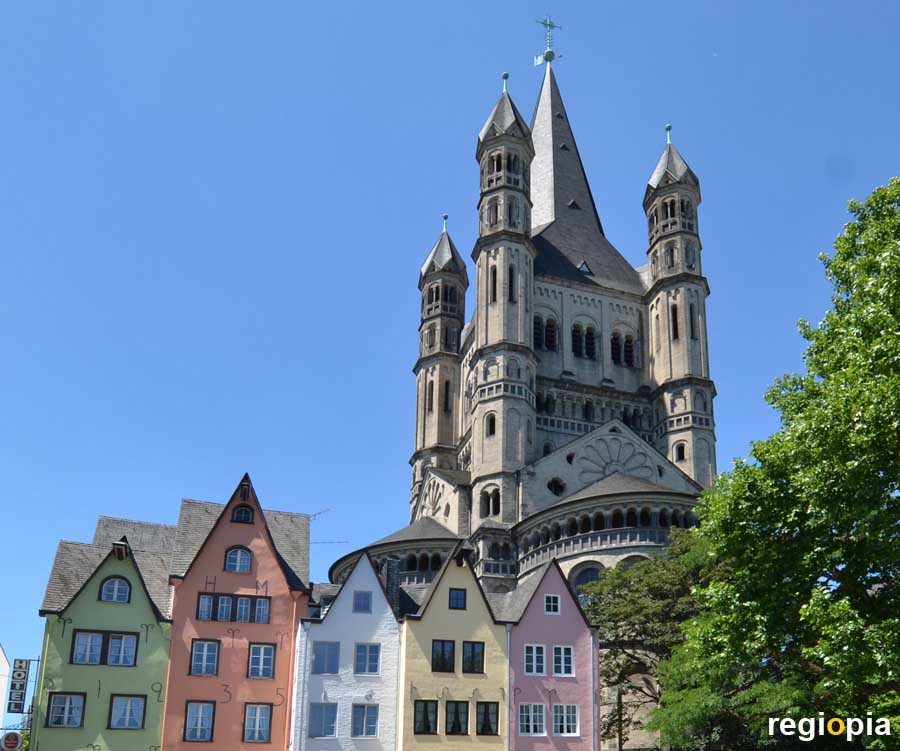
Great St. Martin
The three-aisled basilica was built in the 12th century on the floor plans of the Roman warehouses, which were then on an island on the Rhine. During the Second World War, the church was badly damaged, only a burned-down ruin remained. The reconstruction of Gross St. Martin began in 1948. In 1985 the reconstruction was completed. Since then, the mighty crossing tower has once again become a proud landmark of the city of Cologne. The interior, which is well worth seeing, is simply designed and emphasizes the Romanesque origins of the church.
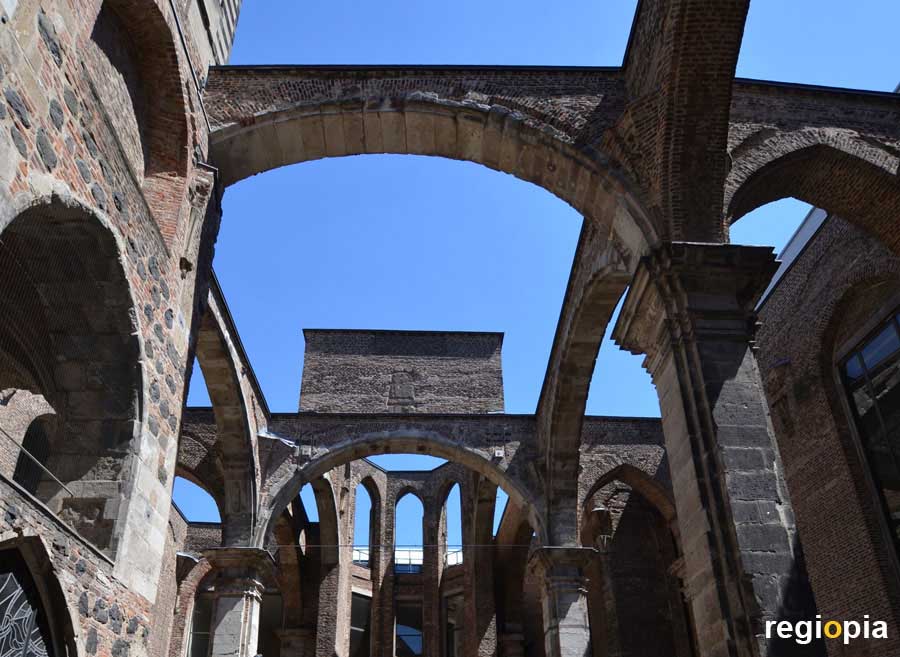
Old Sankt Alban
The former church of Sankt Alban was destroyed in the Second World War and not rebuilt. The former church is a silent witness of the destruction and a memorial to the dead of the world war. The church was built around 1170 in Romanesque style. The relatively well-preserved bell tower was added in 1494. Sankt Alban was converted into a hall church in 1672. The ruin cannot be entered, but you can look into the former nave from the street. A new church was built for the parish, since then the ruin has been called "Old Sankt Alban".
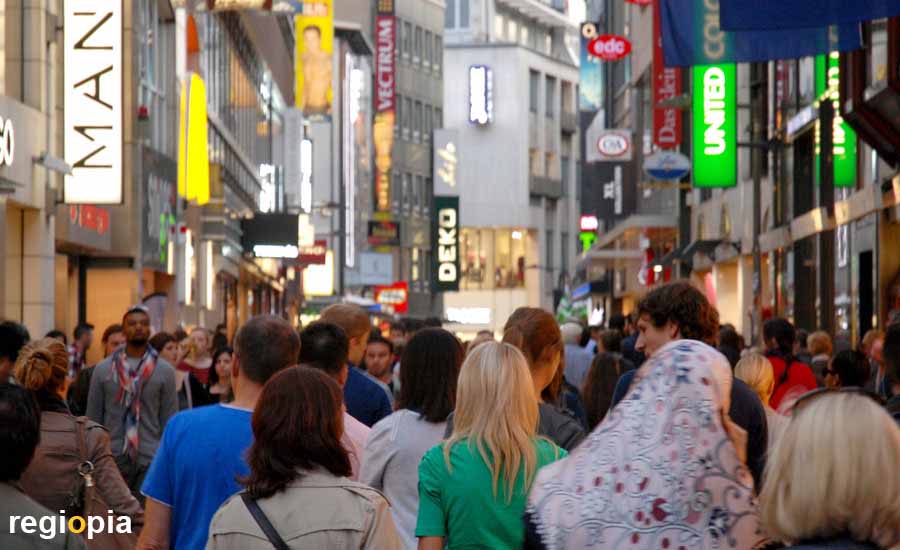
Hohe Straße
The origin of the Hohe Straße goes back to the Roman settlement of Colonia Claudia Ara Agrippinensium. The cardo-maximus was the main axis in north-south direction. Even 2000 years later, it is still the most important shopping street in Cologne. The pedestrian zone is around 600 m long and extends between Cologne Cathedral in the north and Burghöfchen Street in the south. Since the Hohe Straße is barely 10 m wide it is often overcrowded.
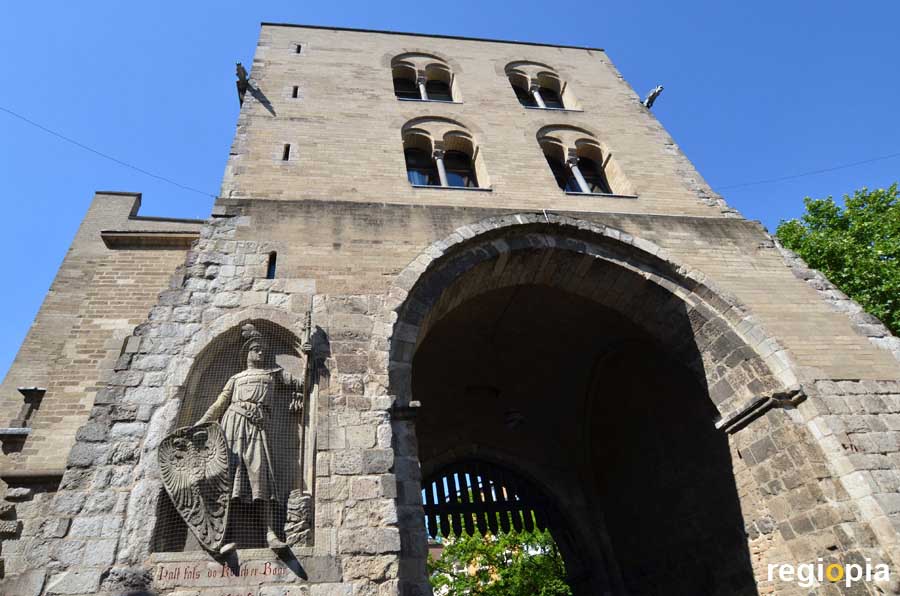
Eigelstein Torburg
The Eigelstein Torburg is a relic of the medieval town fortification. The name "Eigelstein" comes from acorn stones. The Romans had created a cemetery north of Cologne, as a sign of immortality, the Romans built pine stones. These were interpreted by the Germans as acorns. So the road came to her name Eigelstein. The gate was then named after the street. On the left side you can see the "Kölsche Boor" (Cologne farmer) with flail and shield.
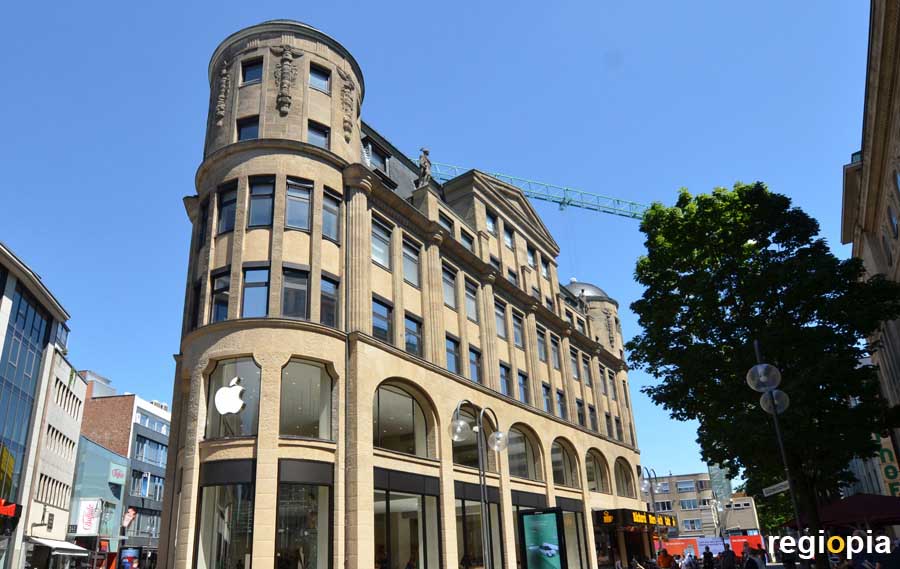
Schildergasse
Schildergasse is the second largest shopping street in Cologne. Large department stores and international fashion stores are located here. The Schildergasse is a bit more elegant than Hohe Strasse. The street runs in an east-west direction and is significantly wider than Hohe Strasse. Schildergasse connects Hohe Strasse with the Neumarkt.
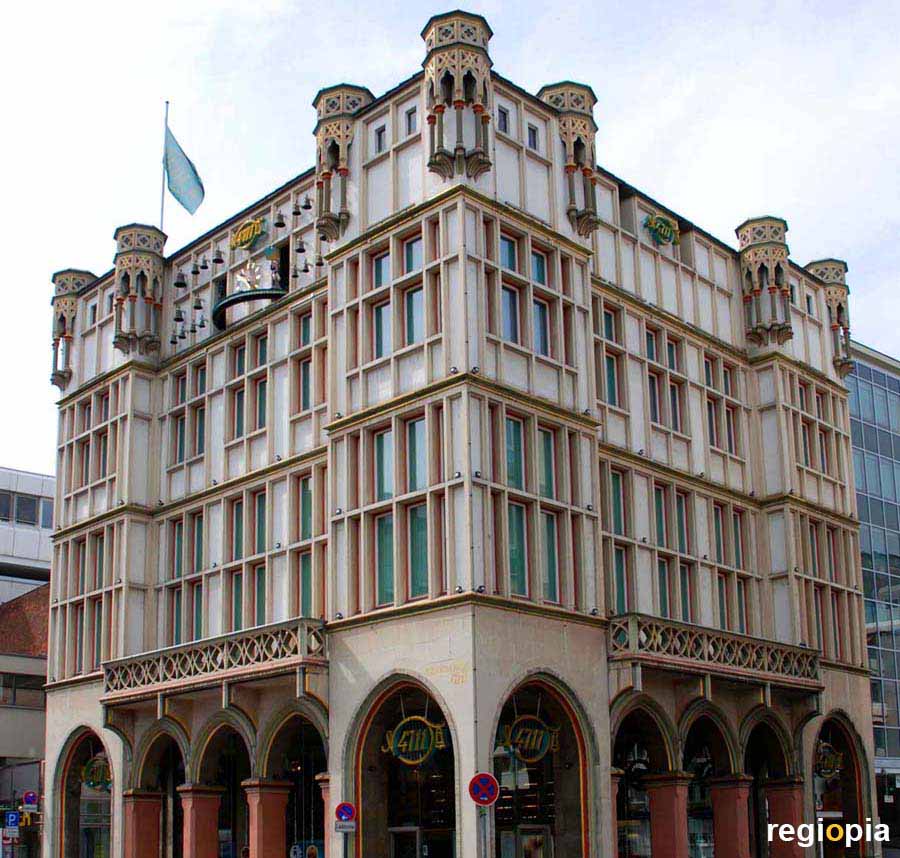
Haus 4711
In the time of the French occupation, the headquarter of the Cologne water received the house number 4711, which has been used since 1830 as a trademark of the fragrant water. In 1811 the numbering was changed and the main building "4711" was now on Glockengasse Number 12. The company later moved to Glockengasse 4. This house was completely destroyed during the WW2. The house was rebuilt in 1963 according to the Neo-Gothic house built before the war.
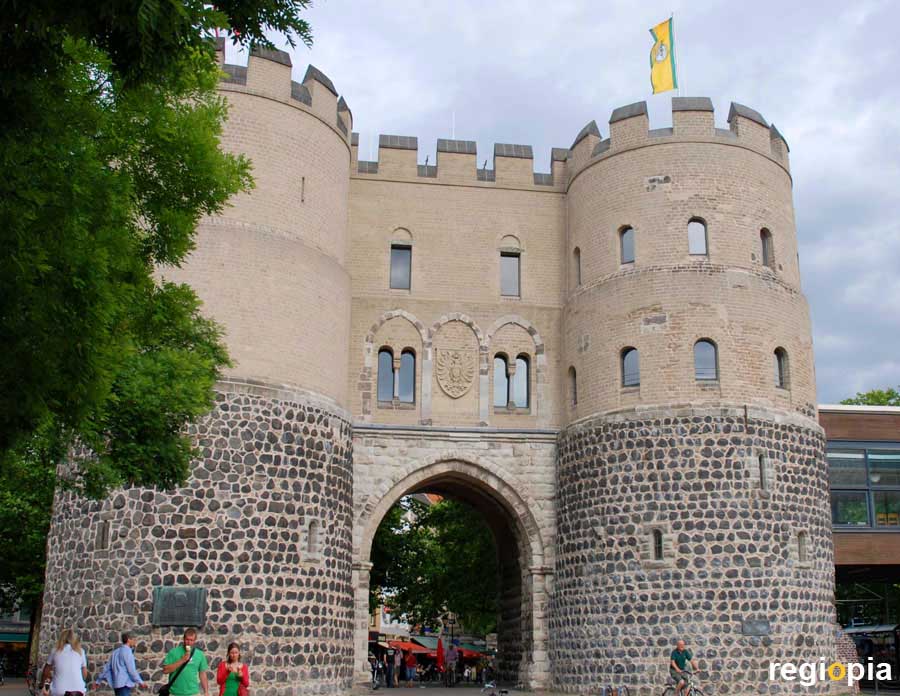
Hahnentorburg
The Hahnentorburg was a gate in the Cologne city wall that was built between 1180-1220. The gate in the west of the city is on the road to Aachen. The street west of the gate is called Aachener Straße. Behind the gate towards the city center, the street is called Hahnenstraße. The name of the gate "Hahn" (Rooster) has nothing to do with the poultry, but was most likely derived from Hain (wood), as there was still a forest behind the gate at that time.
In addition to its defensive function, the gate also served as a dungeon. When the Cologne city wall was torn down in 1881, the city council decided to preserve 4 city gates. The Hahnentorburg was lucky and was renovated in 1890 by Josef Stübben.
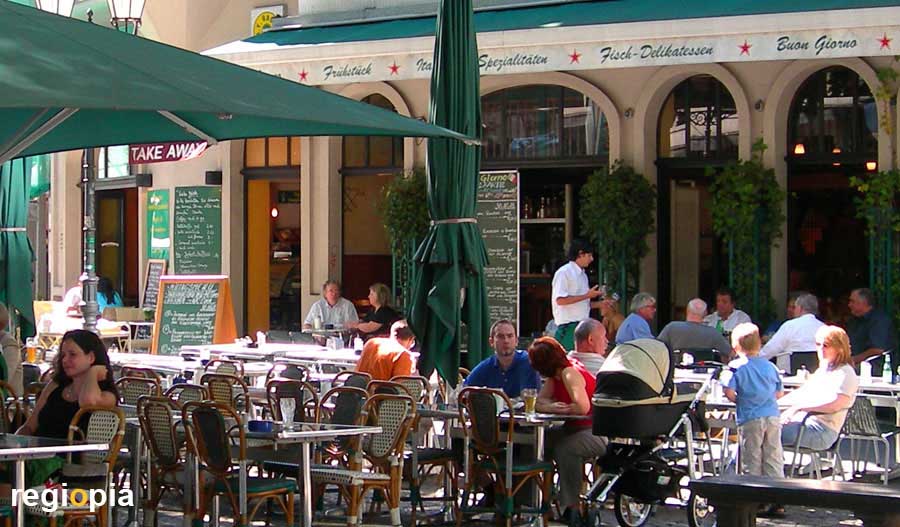
Belgisches Viertel
The popular district between Aachner and Venloer Straße is the perfect place to enjoy. Numerous cafés and restaurants make the Belgian Quarter a popular place to eat out for Cologne residents and curious visitors. The Belgian Quarter is located around Brussels Square, to the west of the city center. The quarter is called the Belgian Quarter because most of the streets are named after Belgian cities. But you can also find names of Dutch cities and provinces.
The Wilhelminian-style district was designed by city architect Josef Stübben, who planned the Cologne city expansion after the city wall was torn down in 1881. It can get crowded around the Brusselser Platz on weekends when the party crowd is letting it go. The Stadtgarten on Venloer Straße is a little more relaxed. The beer garden is one of the most popular addresses in Cologne in summer.

Ulrepforte
The Ulrepforte was the oldest and smallest gate of the medieval city fortifications. One reason for this was that there was no country road behind the gate and the gate therefore had no traffic function. Around 1450 the gate was walled up and converted into a windmill (Karthäuser Mühle). The gate was named after the potters (Üler) who lived here.
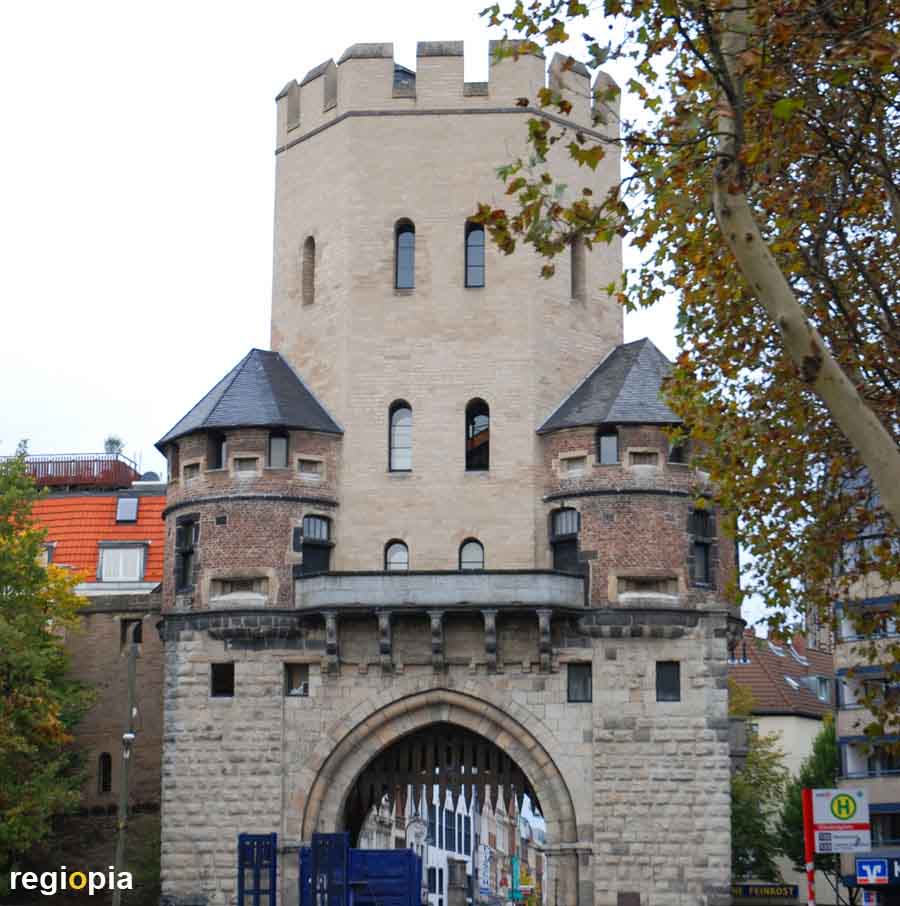
Severinstor
The "Severinstor" was also part of the medieval city wall. The gate leads to Bonn and to the south of Germany. The north-south direction along the Rhine was one of the most important trade routes of the Middle Ages. For this reason, the "Severinstorburg" also had a representative purpose. The city wall lost it's function in 1881 and was removed, but the "Severinstor" remained. Since then the gate building is used as a citizen center.
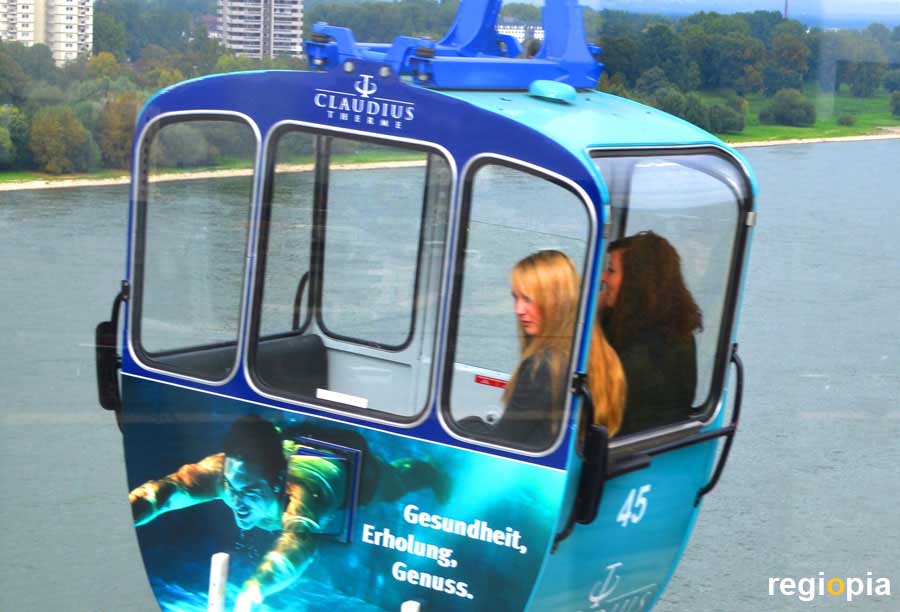
Rheinseilbahn
The Rheinseilbahn connects the two parts of Cologne, Rhiel and Deutz. It was built for the 1957 Federal Garden Show. The zoo bridge below was built in 1966. On July 30th 2017 a gondola wedged on a pillar. The fire brigade had to rescue all passengers from the cabins. The problem has been fixed and the Cologne cable car is crossing the Rhine again. On the way you will have a great view of the city. In winter, the ropeway is stopped. The season starts in late March. See link for opening times and prices.
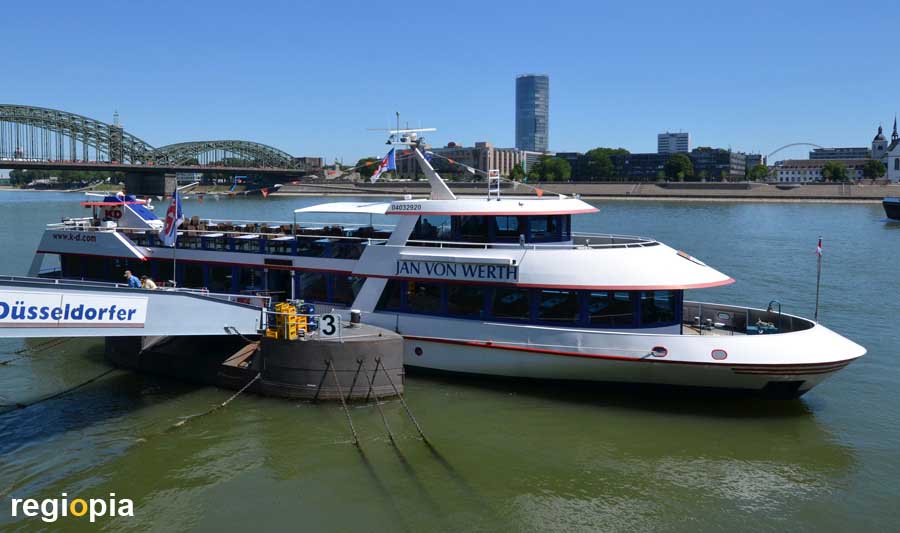
Rhein Cruises
The KD Köln-Düsseldorfer Rheinschifffahrt fleet offers various tours on the Rhine. The 1-hour panorama trip is very popular. But there are many other offers, such as evening trips, party and event trips and river cruises on the Rhine to Rüdesheim, Düsseldorf or Amsterdam. The jetty and a ticket office is located on the banks of the Rhine near the Groß Sankt Martin church. For routes, departure times and prices check the link below.
Map of sights in Cologne
ads
Cologne Germany
Welcome to Cologne
Cologne is much more than carnival, cathedral and Kölsch beer. Cologne was an important city even under the Romans. In the Middle Ages, Cologne was even the biggest city in Germany. In the "Second World War", many historical buildings were destroyed and reconstruction was not successful in all places. Between the "Alter Markt" and the Rhine, parts of the beautiful old town have survived and becomes the center of the "Jecken" during the carnival. The "Belgian Quarter" between Venloer Strasse and Aachener Strasse is another popular party district.
ads
ads


